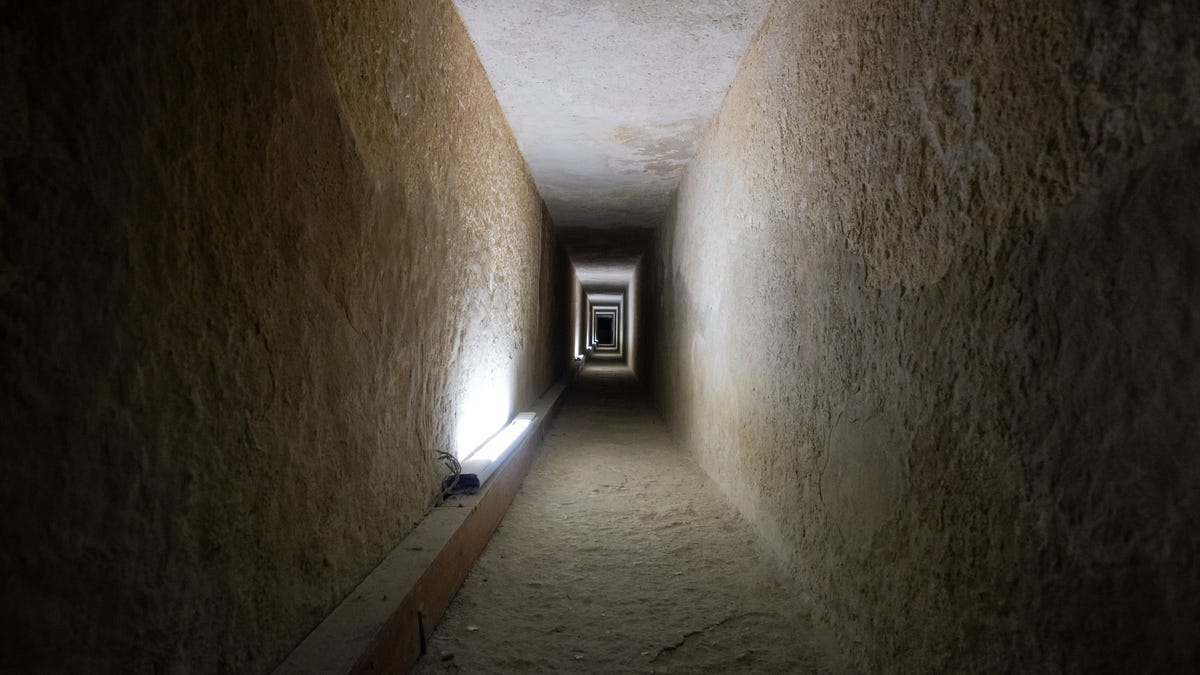Scientists Map an Unexplored Corridor of Egypt's Great Pyramid Using Cosmic Rays
Thanks to cosmic rays, secrets of the last remaining Wonder of the Ancient World are being revealed.

A corridor leading into the Great Pyramid of Giza -- not the one mapped today, mind you.
The Great Pyramid of Giza, the largest of Egypt's famous landmarks, has stood tall for around 4,500 years. But the 2 million blocks that make up the tomb and fortress have not been impenetrable. Looters robbed the structure of its ancient treasures thousands of years ago and scientists have probed its interiors either by studying its corridors or with more advanced measuring techniques like thermal scanners.
The structure still holds many secrets, but since 2015 an international team of scientists, the ScanPyramids team, has been using subatomic particles to probe the unknowns of the monument. In 2017, they revealed a huge void -- creatively dubbed the Big Void -- situated above the pyramid's gallery, though the purpose of this void remains unknown.
On Thursday, in a study published in the journal Nature Communications, the team characterizes the structure of this corridor by taking advantage of the cosmic rays that constantly smash into the Earth.
Cosmic ray muons, a subatomic particle considered one of the most basic building blocks of the universe, pass through Earth's atmosphere and sometimes collide with solid matter on the ground. A given object's density and thickness determine how the muon is absorbed by the object -- and that's measurable.
Two teams installed seven detectors inside two corridors of the pyramid over a period of three years, from 2016 to 2019, that were able to capture these muons. The direction in which these muons smash into the detector is useful to determine what matter they passed through before they were detected. This is how the team was able to first discover the North Face Corridor and then characterize its features.
Their measurements show that the North Face Corridor sits about 2.6 feet behind the North Face Chevron, an interesting structure just above the modern-day public entrance to the pyramid with a currently unknown role. The corridor itself is likely 27 feet in length and pipe-shaped and runs horizontal to the ground. It also appears to have a larger cross-section than other corridors within the Great Pyramid and, at least from this measurement, it appears unlikely to connect to the Big Void previously detected by the ScanPyramids team.
It's a particularly intriguing find because the North Face Chevron was once hidden behind the outer layer of casing stones on the pyramid. Why hide these chevrons? What were they for? Why is there a corridor behind them?
It seems every time scientists probe the Great Pyramid's hidden pathways and seemingly empty spaces, they find more questions.

